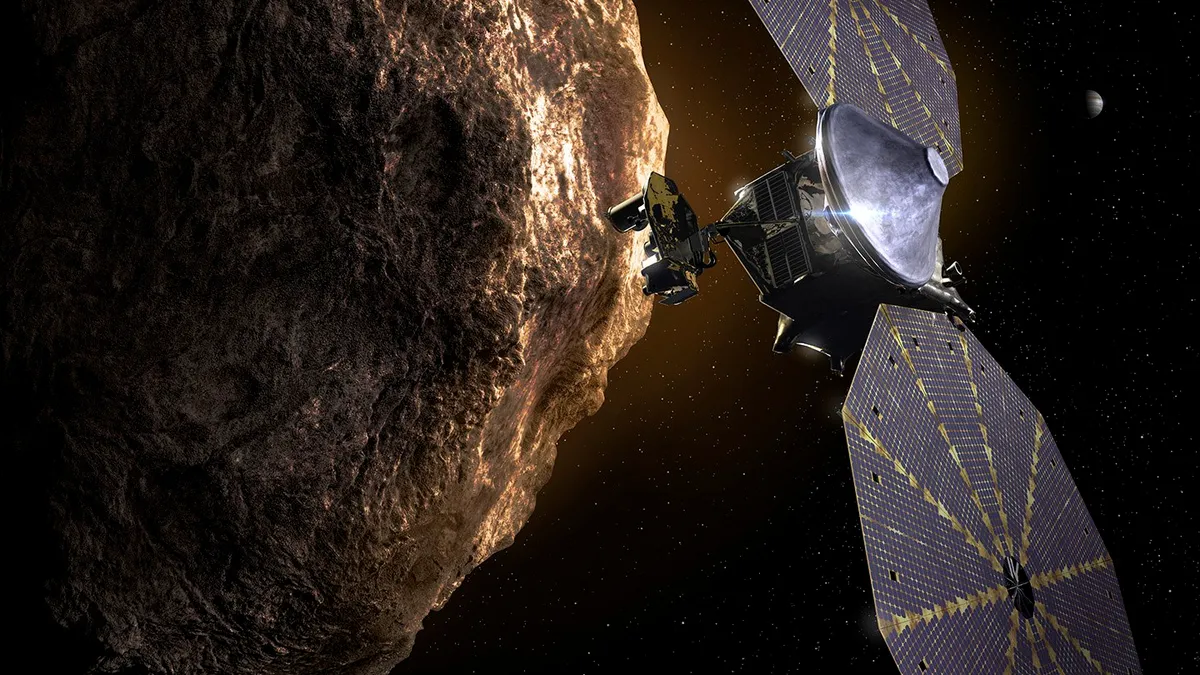
This Easter Sunday promises to be an exciting day for the astronomy community, as all eyes will be on NASA's Lucy spacecraft. Scheduled for a close encounter at 1:51 p.m. EDT (1751 GMT) on April 20, 2025, Lucy is on a mission to unlock the secrets of our solar system. Launched in 2021, this groundbreaking spacecraft is embarking on a 12-year journey to the orbit of Jupiter, where it will conduct flybys of eight Trojan asteroids, aiming to uncover the building blocks that may have led to the emergence of life on Earth.
Before Lucy reaches its primary targets, the spacecraft will perform several critical flybys for practice. The first of these rehearsals took place on November 1, 2023, when Lucy successfully flew by the asteroid Dinkinesh. This Sunday, Lucy will approach its second target, the asteroid Donaldjohanson, at a distance of approximately 620 miles (1,000 kilometers). During this flyby, Lucy will test its advanced scientific instruments, gathering invaluable data that will aid in its mission.
Lucy is equipped with a suite of sophisticated scientific instruments designed to analyze the composition and characteristics of asteroids. These tools include:
L'Ralph: A color camera and infrared imaging spectrometer.L'LLORI: The high-resolution Lucy Long Range Reconnaissance Imager.L'TES: The far-infrared Lucy Thermal Emission Spectrometer.Professor Phil Christensen from Arizona State University, who designed L'TES, shared insights during a video interview about the upcoming flyby. "We're going to observe Donaldjohanson as if it was one of the Trojan asteroids," he explained, emphasizing the importance of conducting a thorough practice run to determine the asteroid's composition.
The connection between Lucy and Donaldjohanson extends beyond their physical proximity in space. The NASA mission is named after a three-million-year-old fossil australopithecine skeleton discovered in Ethiopia in 1974, which has significantly contributed to our understanding of human evolution. The bones were discovered by paleoanthropologist Donald Johanson, who also founded Arizona State University’s Institute of Human Origins.
In a fascinating discussion during the video interview, Johanson and Christensen explored the potential for new discoveries during the upcoming flyby. If scientists detect a secondary asteroid during the encounter—an occurrence not uncommon, as asteroids often travel in pairs—Johanson humorously remarked, "Oh, I'm going to have to give that some real thought," when asked what he would name it.
As the Lucy spacecraft continues its mission to study the origins of the solar system, the upcoming flyby of Donaldjohanson is set to be a pivotal moment, not just for the mission but also for our understanding of celestial bodies and their role in the history of life on Earth.